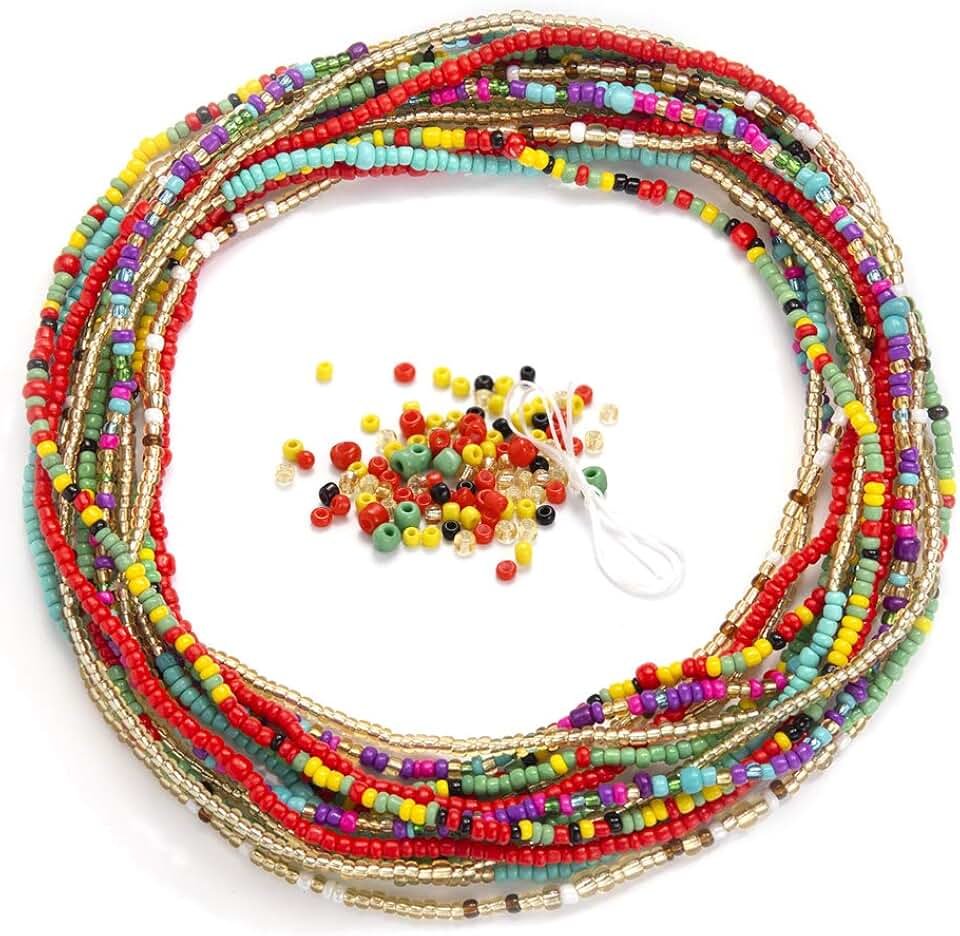Waist beads are more than just a beautiful accessory. For centuries, they have held profound cultural, spiritual, and personal significance in many African cultures. These strings of beads, often made from glass, wood, metal, or gemstones, are worn around the waist or hips. Let’s take a deep dive into the cultural significance of waist beads, exploring their history, meanings, and modern-day relevance.
Historical Context
The origins of waist beads can be traced back to ancient Egypt, where they were worn by women as a symbol of wealth and status. In various West African cultures, particularly among the Yoruba people of Nigeria, waist beads have been an integral part of cultural heritage. They were used in rites of passage, fertility rituals, and as indicators of a woman’s life stage and social status.
Symbolism and Meaning
- Femininity and Sensuality: Waist beads are often associated with femininity, sensuality, and fertility. They are considered an intimate adornment, emphasizing the curves of a woman’s body and celebrating her sexuality. In some cultures, they are worn under clothing, known only to the wearer and her partner, adding an element of mystery and allure.
- Rites of Passage: In many African cultures are given to girls during puberty as part of their coming-of-age ceremony. This tradition marks the transition from childhood to womanhood. The beads serve as a constant reminder of their cultural identity and heritage.
- Spiritual Protection: Waist beads are believed to have protective and healing properties. They are often infused with charms and spiritual elements to ward off negative energy and bring good fortune. The beads can be blessed by spiritual leaders to enhance their protective qualities.
- Body Shaping and Weight Management: Traditionally, waist beads have been used to gauge changes in body size. Women use them to monitor their weight, as the beads will tighten or loosen depending on weight gain or loss. This practical use aligns with the belief that maintaining a certain body shape is essential for health and beauty.

Cultural Variations
While are most commonly associated with West African cultures, their use and significance vary widely across different regions and communities.
- Ghana: In Ghana, waist beads, known as “bejew,” are worn by women of all ages. They are often used in ceremonies and festivals and are an essential part of traditional dress. The colors and materials of the beads can signify different aspects of life, such as love, wealth, and spirituality.
- Nigeria: Among the Yoruba people of Nigeria, are deeply embedded in cultural practices. They are used in marriage ceremonies, where brides wear special waist beads as a symbol of their marital status. The beads are also believed to enhance fertility and protect pregnant women.
- Kenya: In Kenya, waist beads are used by various ethnic groups, including the Maasai and Kikuyu. They are often worn by young girls as a sign of beauty and maturity. The beads are also used in dance and performance, adding a rhythmic element to the movements.
Modern Relevance
In contemporary society, have transcended their traditional boundaries and gained popularity worldwide. They are now appreciated for their aesthetic appeal and are worn by women of different cultures as a fashion statement.
- Fashion and Personal Expression: It has become a trendy accessory, often customized to reflect personal style and preferences. They come in various colors, shapes, and sizes, allowing for endless creativity. Some women wear them visibly over clothing, while others keep them hidden as a personal treasure.
- Body Positivity: The resurgence of modern fashion aligns with the body positivity movement. They encourage women to embrace their bodies, regardless of size or shape. The act of adorning oneself with waist beads can be empowering, promoting self-love and confidence.
- Cultural Appreciation: As gain popularity beyond their traditional roots, there is a growing awareness and appreciation of their cultural significance. Many women wear them as a way to connect with and honor African heritage, fostering a sense of pride and identity.
Conclusion
Waist beads are a rich tapestry of history, culture, and personal meaning. They have evolved from ancient traditions to modern fashion, maintaining their cultural significance and continuing to empower women worldwide. Whether worn for their spiritual properties, as a rite of passage, or simply as a beautiful accessory, waist beads are a celebration of femininity, identity, and heritage. As they adorn the waists of women across the globe, they remind us of the timeless beauty and strength found in cultural traditions.
FAQ’s
Q1: What are waist beads?
Waist beads are strings of beads worn around the waist or hips, often made from materials such as glass, wood, metal, or gemstones. They have significant cultural, spiritual, and personal meanings in many African cultures.
Q2: Where did waist beads originate?
It originated in ancient Egypt and has been a part of various African cultures, particularly among the Yoruba people of Nigeria. They have a rich history dating back centuries.
Q3: What do waist beads symbolize?
Waist beads symbolize femininity, sensuality, and fertility. They can also represent rites of passage, spiritual protection, body shaping, and weight management.
Q4: How are waist beads used in rites of passage?
In many African cultures, are given to girls during puberty as part of their coming-of-age ceremony, marking the transition from childhood to womanhood. They serve as a constant reminder of cultural identity and heritage.
Q5: Do waist beads have spiritual significance?
Yes, waist beads are believed to have protective and healing properties. They can be infused with charms and spiritual elements to ward off negative energy and bring good fortune.
Q6: How do waist beads help with body shaping and weight management?
Waist beads are traditionally used to gauge changes in body size. They tighten or loosen depending on weight gain or loss, helping women monitor their weight and maintain a healthy body shape.




